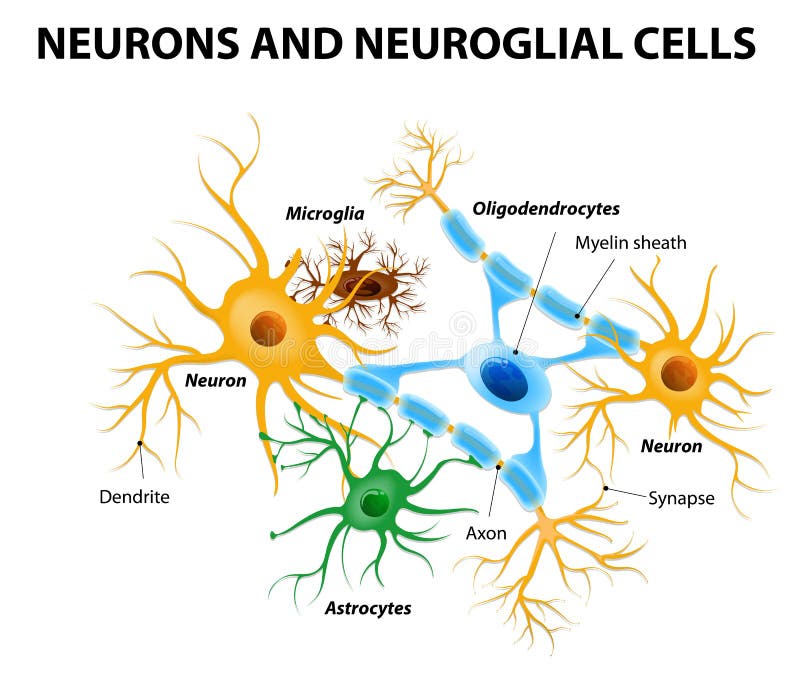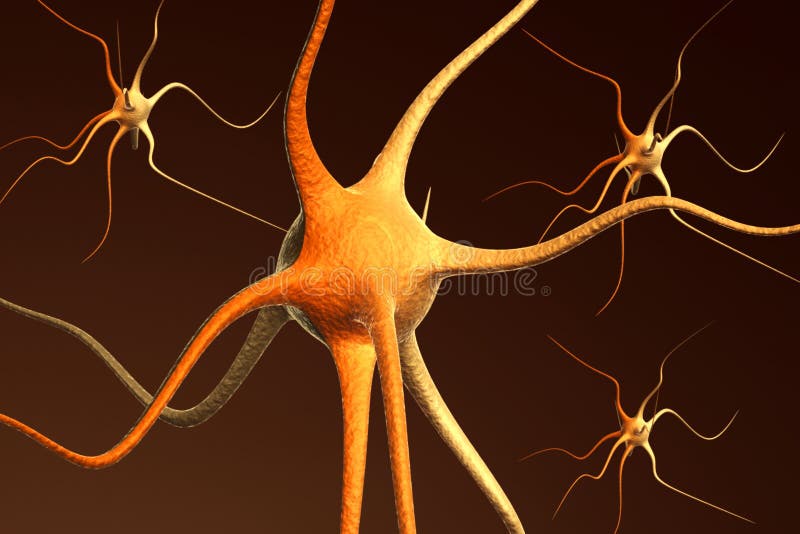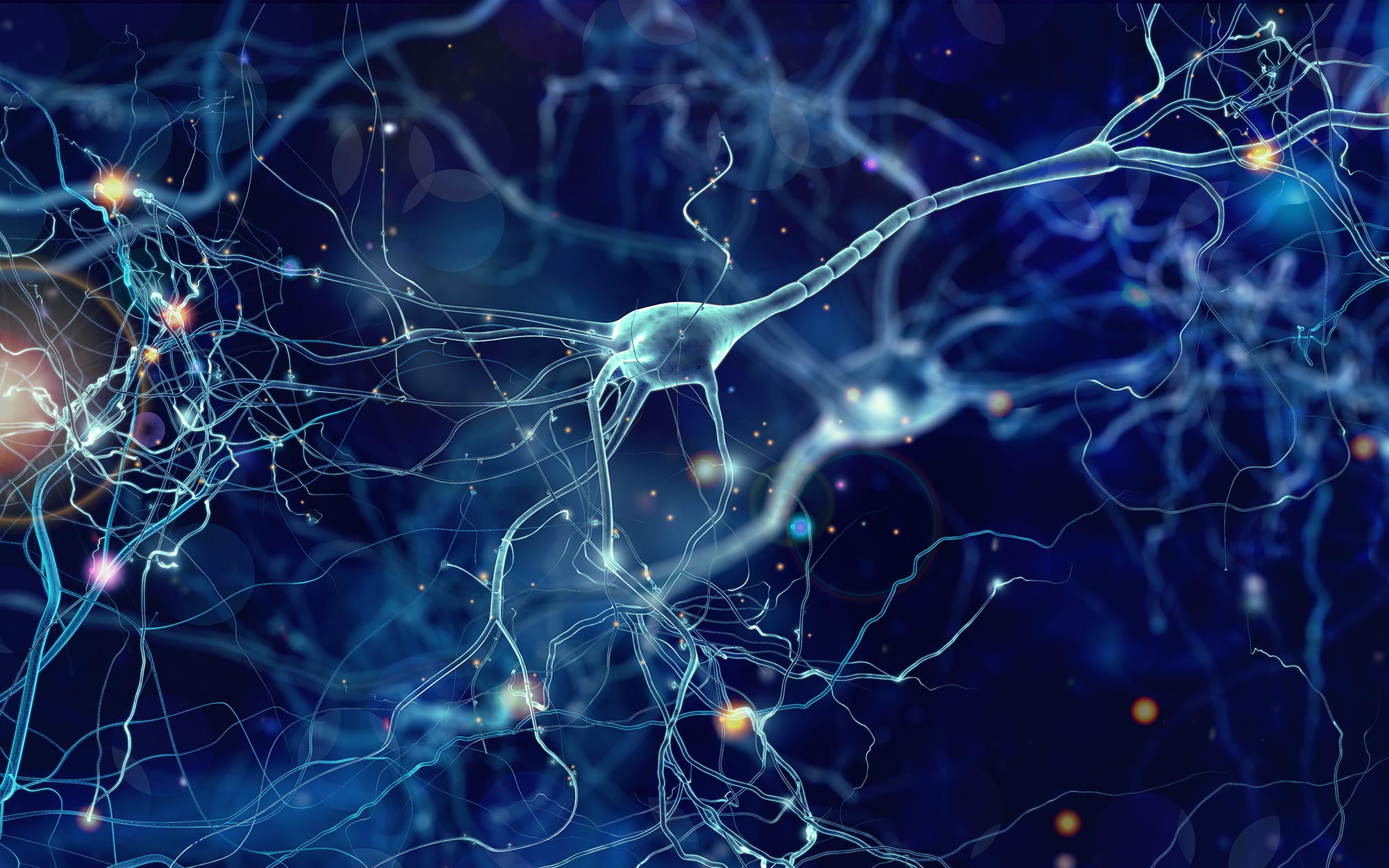

Neurons communicate with one another through action potentials (changes in a neuron’s electric potential) and neurotransmitters.

The junction where two neurons meet is called a synapse and is where intercell communication takes place. Neurons can have multiple sets of dendrites, depending on the neuron’s function. They branch out from the cell body like antennae and receive and process signals from the axons of other neurons. The dendrites are where a neuron receives information from other cells. Many axons are covered in a fatty substance called myelin, which helps the axons conduct an electrical signal. The axon is a long, thin structure that carries information from its home neuron to another neuron via electrical impulse. It contains genetic information, maintains the neuron’s structure, and provides energy to carry out the neuron’s work. The cell body (soma) is the base of the neuron. A neuron has three main parts: a cell body (or soma), dendrites, and an axon. Neurons are structurally and functionally different than other types of cells – they are uniquely designed for the purpose of communication between cells. They send information between sensory neurons and motor neurons, often forming complex circuits to help you react to external stimuli (like signaling to pull your hand away after touching a hot stove).

Sensory neurons help you sense the world around you – they work with physical and chemical inputs from the external environment.There are thousands of types of neurons, but scientists classify them into three broad types based on function: They are information messengers, using electrical impulses and chemical signals to transmit information between different regions of the brain and between the brain and the rest of the nervous system. Neurons (or nerve cells) are the basic working units of the brain and nervous system.


 0 kommentar(er)
0 kommentar(er)
